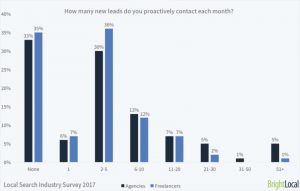What you need to know about how ID resolution works to provide omnichannel insights for personalized, people-based marketing.
Identity resolution tools take simple analytics a step further by tying online behavior to a consumer’s unique identity, giving marketers the information they need to zero in on their target consumers with highly personalized, tailored offers that, in turn, lead to higher ROI.
Identity resolution has become increasingly important for marketers as people move across devices — mobile phones, desktops, connected TVs — throughout the day. Identity resolution can help marketers understand that Mobile User A is the same person as Desktop User B. Without that understanding, marketers aren’t able to control messaging to users as they progress through the customer journey on different devices and that’s where identity resolution can help.
It works by reconciling all available data points, which include those collected by first-, second- and/or third-parties. A composite is built that provides marketers with a cherished 360-degree view of a customer’s identity and user journey, and enables an insight-informed, data-driven “single-customer view” — also known as people-based, or user-level, marketing.
Marketers use a number of tools and platforms to reconcile users’ identities, including simple customer relationship management (CRM) systems. In 2018, the martech landscape saw a proliferation of customer data platforms (CDPs)— tools that track user omni-channel behavior across different devices, platforms and channels.
At the center: the identity graph
To identify individual customers, data is plotted against an identity graph. Consumers give consent along their path for various pieces of marketing technology to collect, process and analyze data such as device ID, email addresses, phone numbers and cookie data, in addition to behavioral information such as purchases or website visits. That information is matched to other data in the graph using algorithims and patterns to create a likelihood, or probabilistic match.
Over time, the systems use artificial intelligence (AI) and machine learning to get smarter and make better guesses at matches. When a user takes an action that requires them to verify their identity, such as paying with a credit card, that guess then becomes deterministic — a perfect match.
It’s a mutually beneficial arrangement. In exchange for that information, brands provide customized experiences that are more relevant and useful to the consumer, a convenience that some studiessay is worth it even for those who are concerned with privacy.
Walled gardens such as Facebook have their own identity graphs, as do data management vendors, leading some of the industry’s leading demand- and supply-side platforms to formthe Advertising ID Consortium in 2017.
Data laws threaten the ID graph
Strict restrictions governing the use of personal data, such as Europe’s General Data Protection Regulation (GDPR), the soon-to-be implemented California Consumer Privacy Act (CCPA) and potential upcoming federal legislation, might throw a monkey wrench into companies’ ability to collect and use second- and third-party data.
Signal CEO Mike Sands, whose company provides such a solution, says that these laws provide “a strong incentive to invest heavily in first-party data that brands can own and operate with users’ consent.”
“Making a strategic pivot away from third-party data toward first-party data also puts brands on better footing in the fight against Amazon and other industry disruptors (e.g., direct-to-consumer upstarts) with vast troves of first-party customer insight,” Sands said, though he believes that second-party data still has a future in ID resolution.
“Second-party data is a different story,” Sands said. “Because it brings together first-party data, it is unique and high quality: not everyone can access it. While brands have chosen for decades to participate in data sharing agreements and data co-ops, emerging technologies are taking second-party data to the next level while addressing the privacy and security concerns that historically deterred many marketers from utilizing these other options.”
What’s the future of ID resolution?
Mara Chapin, digital and social media specialist at Massachusetts-based Market Mentors, says that privacy challenges could force marketers to rely on other customer analyses in addition to identity resolution.
“Due to the regulations over the past year and the reduction of second- and third-party data, a lot of the targeting options and interest-based information have been taken away from marketers when building out their marketing strategies,” Chapin said. “This has required us to learn more about consumers’ behaviors and work harder on our creative in order to accurately target the right markets and make sure the users we want to reach will be the ones who click and convert into a sale.”
“In the future,” Chapin said, “we’re going to start focusing more on user intent rather than geographic-, demographic- and interest-based targeting in order to build our audiences. Instead of having to know personal information that regulations are being built to protect, we will rely more on what people are looking for rather than what they like.”
Sands doesn’t think ID resolution is going anywhere.
“I do not envision identity resolution giving way to rival marketing solutions — if anything, it’s becoming a requisite step at all stages of the customer lifecycle, and I predict it will displace many technologies and philosophies that do not enable the same real-time, continuous engagement,” Sands said.
Chapin ultimately agreed that identity resolution is key to a good marketing strategy. “It’s important in order to reach the proper audience in your marketing messages, whether it’s through the latest digital offerings or in your traditional advertising placements,” Chapin said. “Knowing who your audience is and being able to segment your buys to those targets is the best way to use your budget and overall marketing strategies effectively.”
This story first appeared on MarTech Today. For more on marketing technology, click here.
Marketing Land – Internet Marketing News, Strategies & Tips
(91)
Report Post







